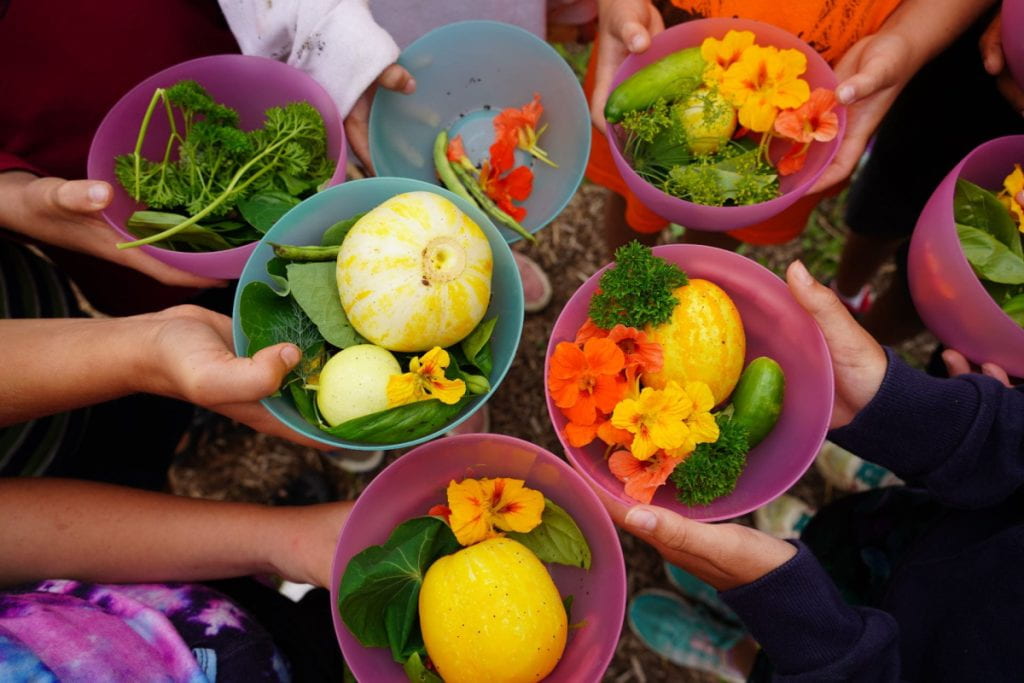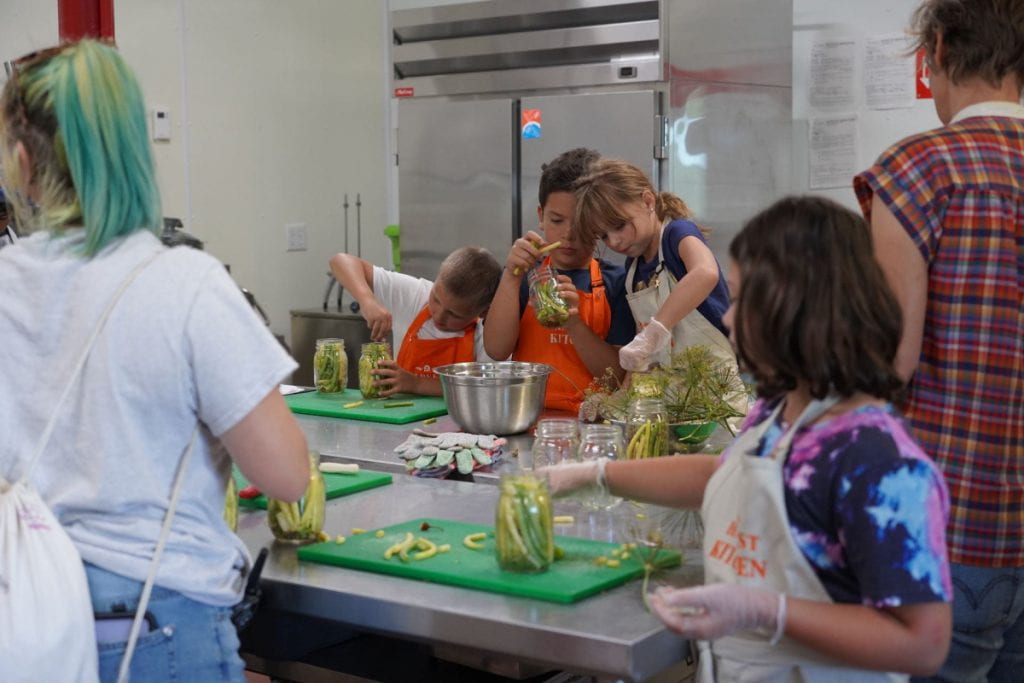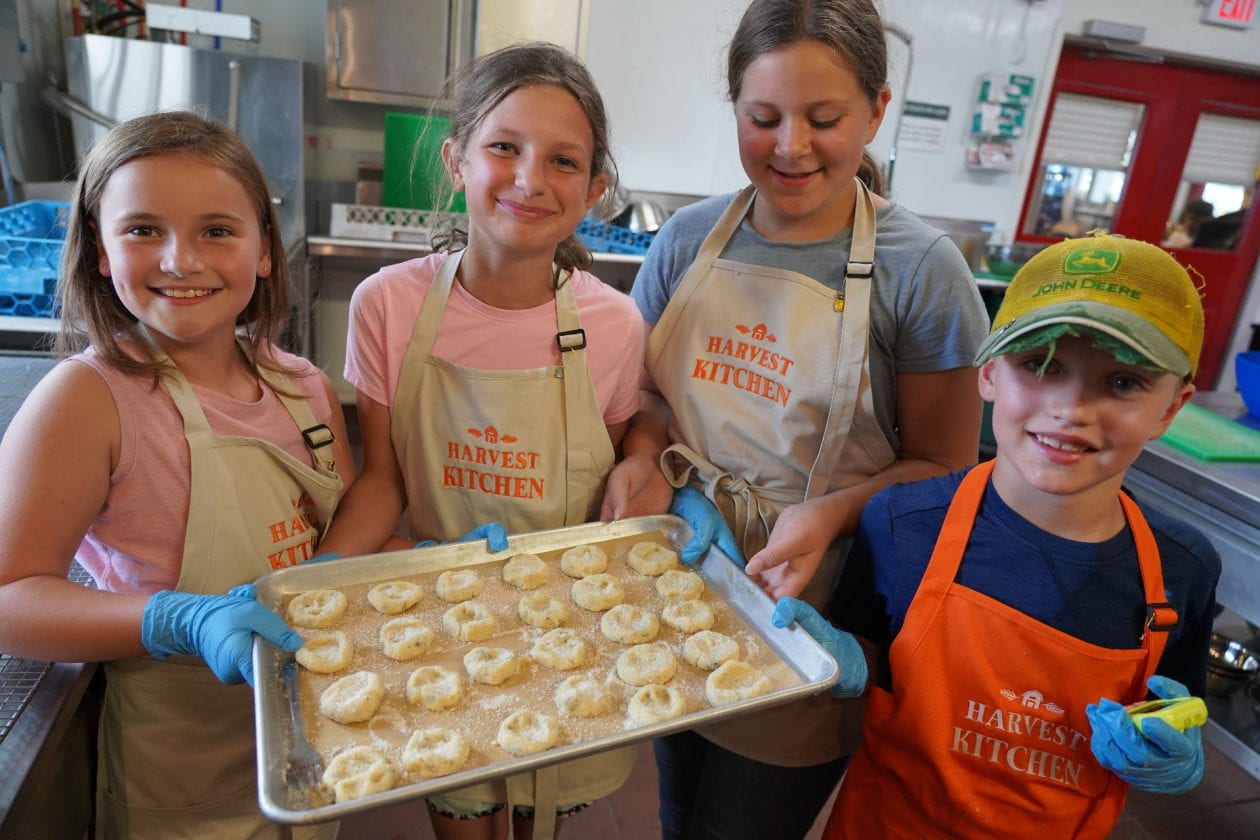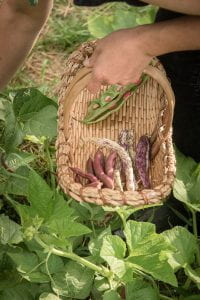A whirlwind of sights, flavors and new skills were learned in the past 2 weeks in the Harvest Kitchen at the Extension Learning Farm. For the first time, North Wind Farm Day Camp and the Harvest Kitchen paired up to offer a special theme, Farm to Table Chef Training Camp. Three Extension Educators pulled together the curriculum, Flip Filippi-Local Food Program Leader and Harvest Kitchen Manager, Erica LaFountain-Community Horticulture Educator, and Leslie Schwartz-our newest arrival to the team as a Food System Program Assistant.
There’s much potential on the Learning Farm and this was an excellent union of growing, cooking and youth education. The Harvest Kitchen is already used for many purposes preservation and cooking programs for the public, including workshops with the onsite BOCES Agricultural Academy, and rental by local food entrepreneurs.
We started planning for this camp back in the winter. We decided that the foundational ideas to guide our planning are exposure to preparing whole foods, tying ingredients back to what can be grown or produced in northern NY, and getting hands-on experience in a fun, safe environment.

The two week camp included a cooking session every day and sometimes two for a group of 12 youth aged 8-12 years old. They were an incredibly fun and curious bunch. All the campers got to bring home a binder full of the recipes they made as well as a Harvest Kitchen apron to accompany them on future kitchen adventures. They harvested ingredients from the onsite high tunnel multiple times a week, and even ventured to the farmers market and a local farm to hunt down more ingredients for upcoming recipes.

So what did we make together? Over the course of 2-weeks the campers made 28 different recipes! It was a wide diversity of preparations, some were foundational, simple skills such as during the sessions “All About Eggs” or “Baked Goods with Herbs”. Other sessions were more aspirational such as making handmade pasta and fresh mozzarella. They even experienced the longstanding north country tradition of canning, making a batch of dilly beans. On the last day, they plated and served the whole camp and their families fresh snacks including caprese kebabs, mixed berry fruit leather and three kinds of homemade popsicles.

One of my favorite parts was experiencing the enthusiasm and creativity of the group. One session, they made oven fries and homemade ketchup. Campers decorated their own ketchup bottle to bring home, and the names and designs were bright and beautiful. Each morning, they rushed into the kitchen to wash their hands and don their aprons for the day. Many excitedly took notes in their recipes binders, marking up their favorite dishes and reminders for what they might change when they try the recipe again. Read more Fresh Flavors with Farm Day Camp





